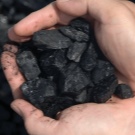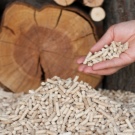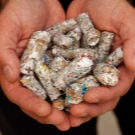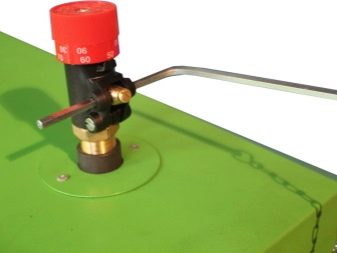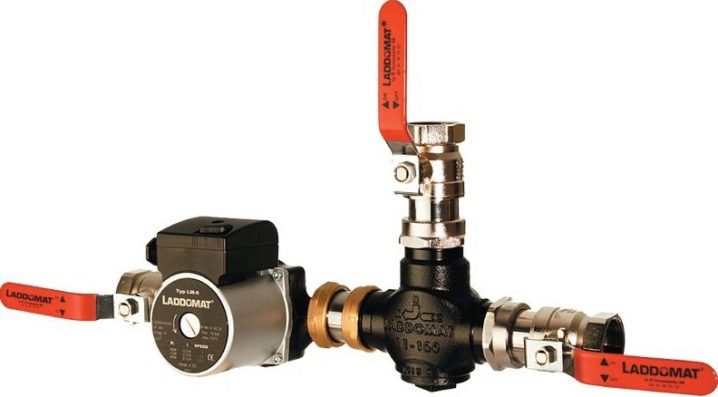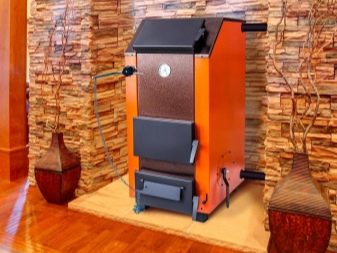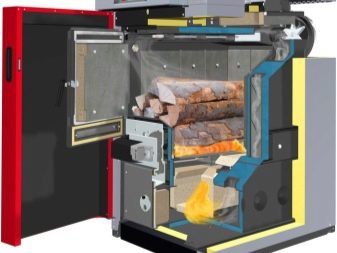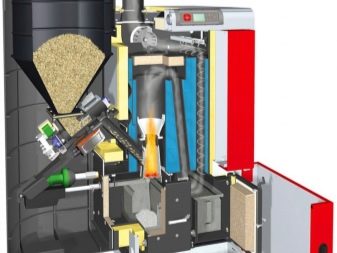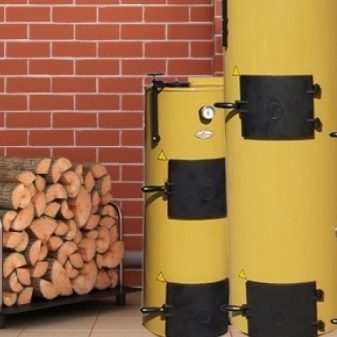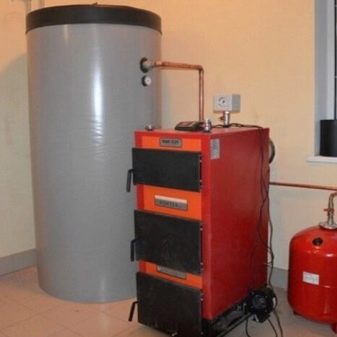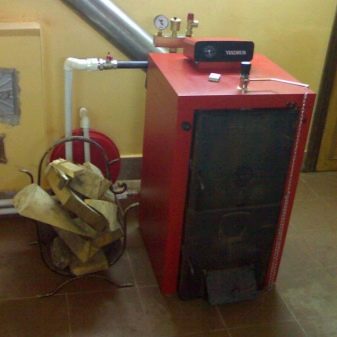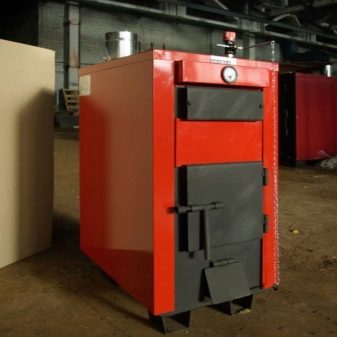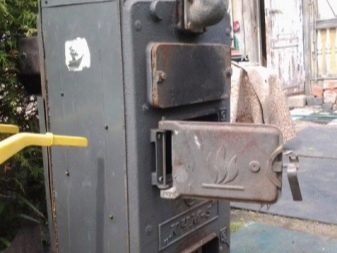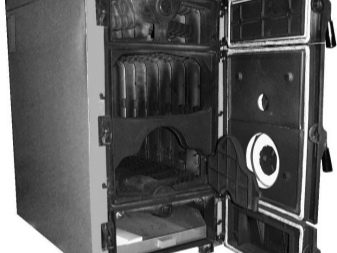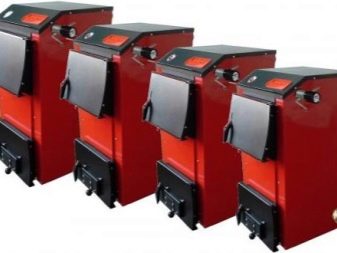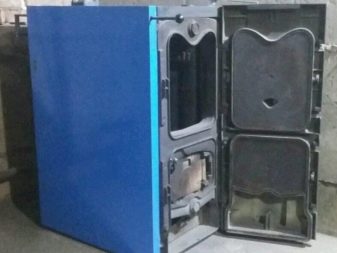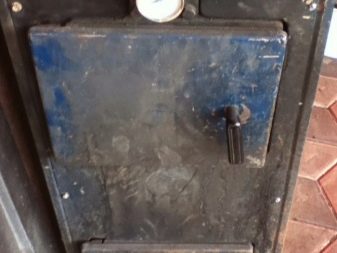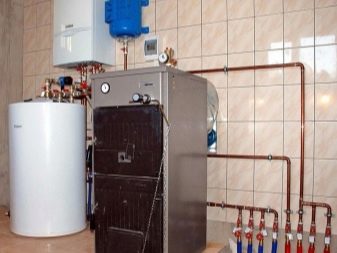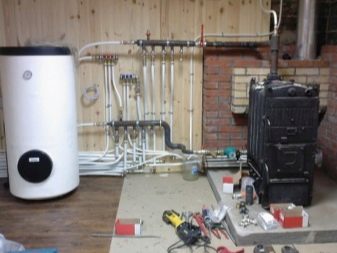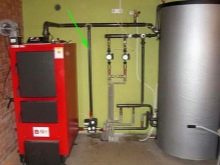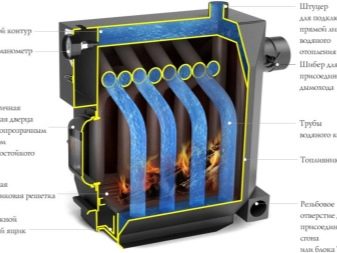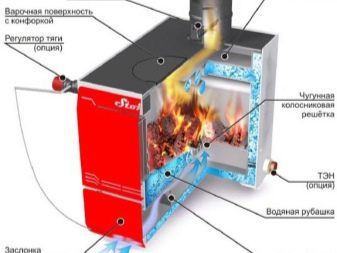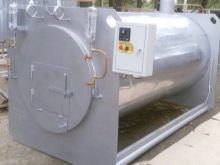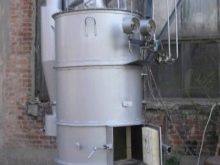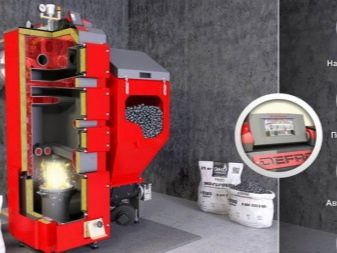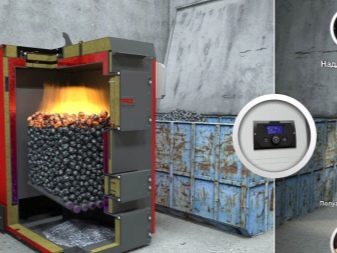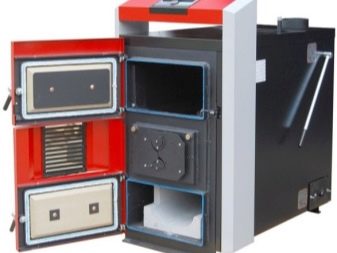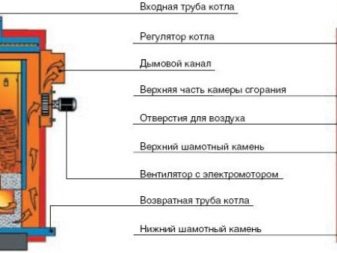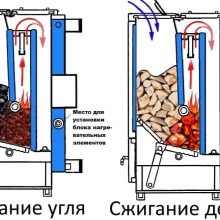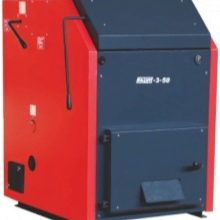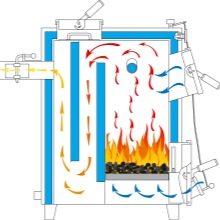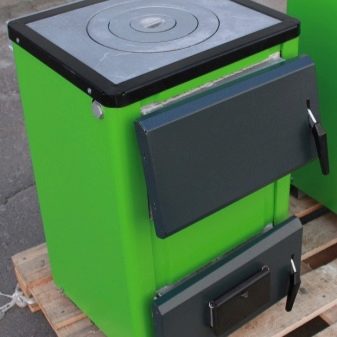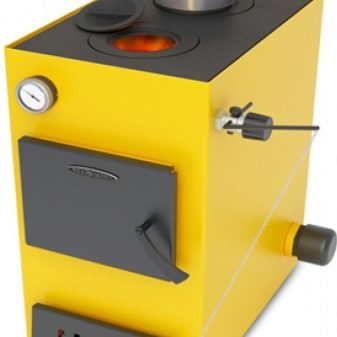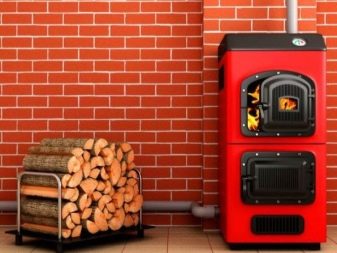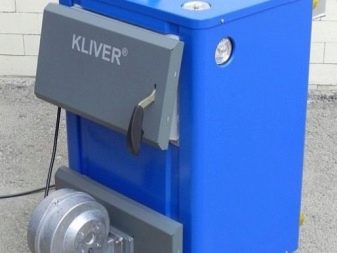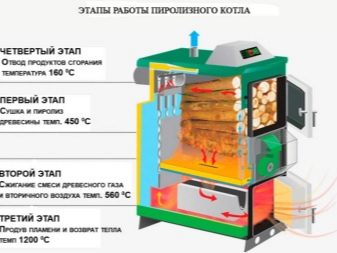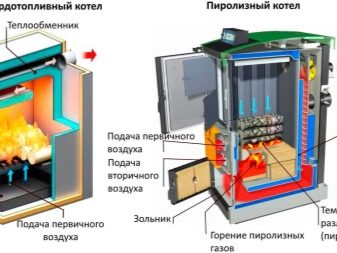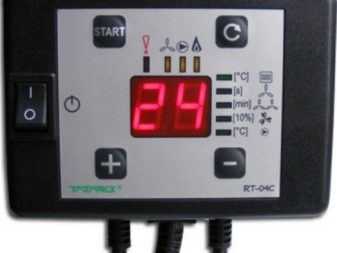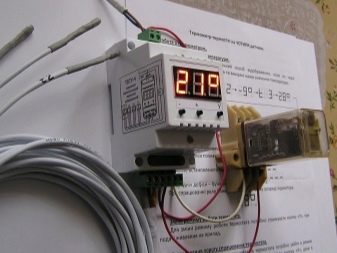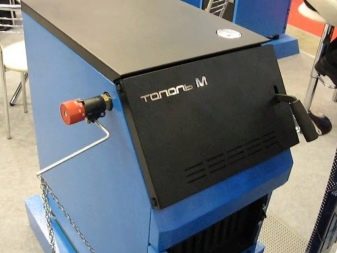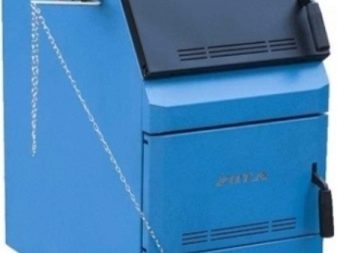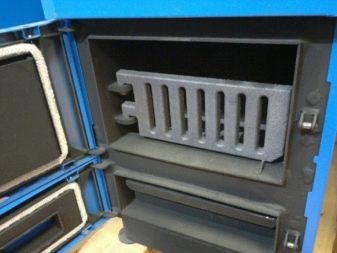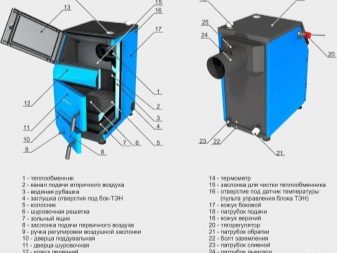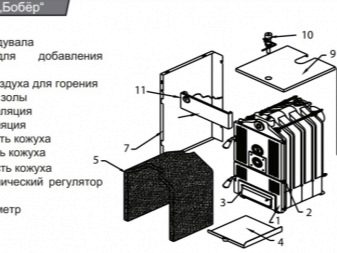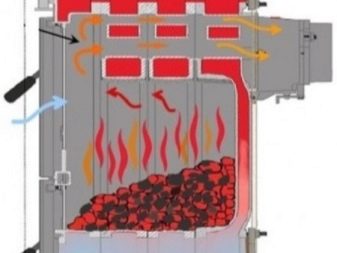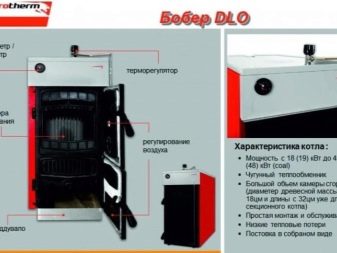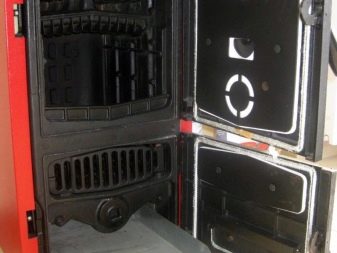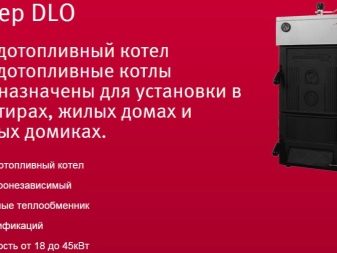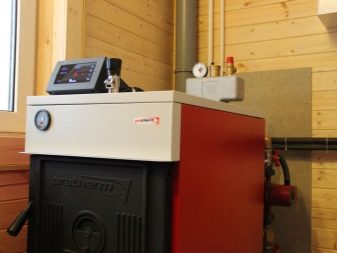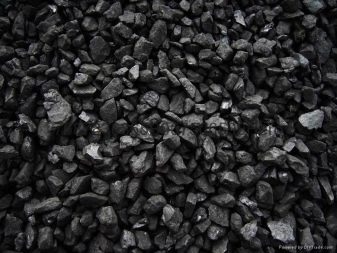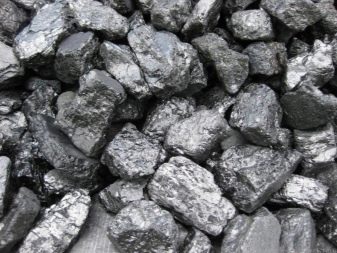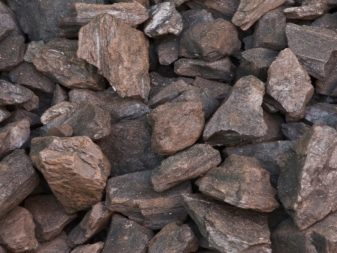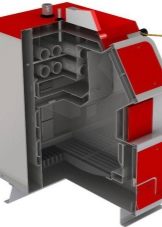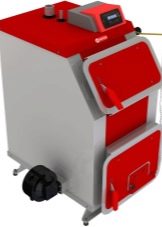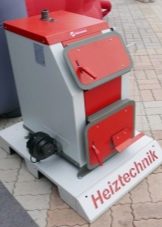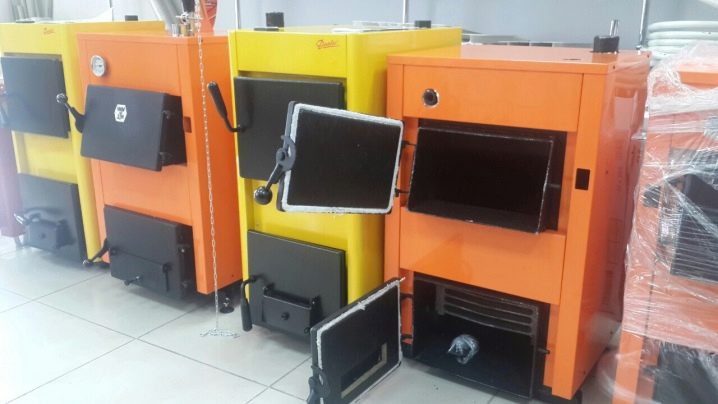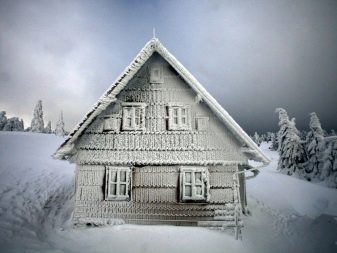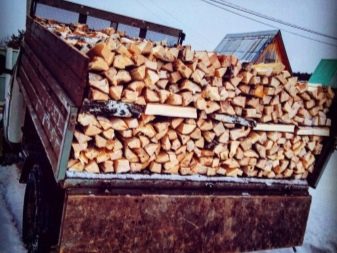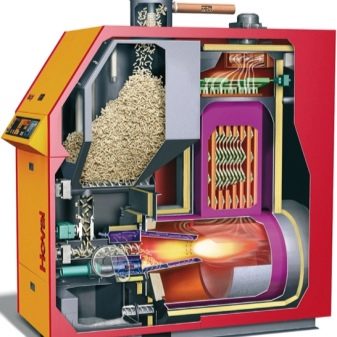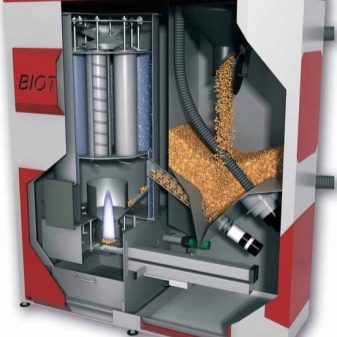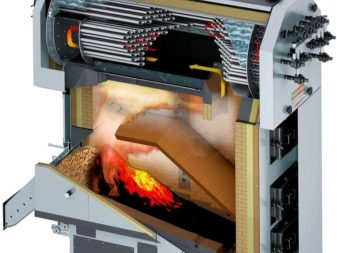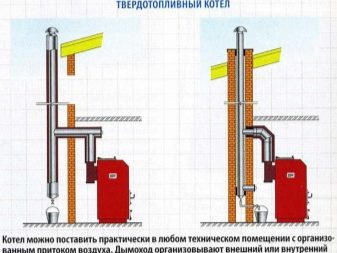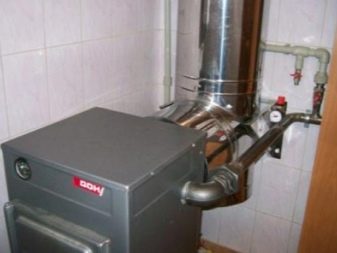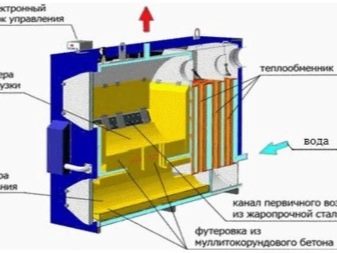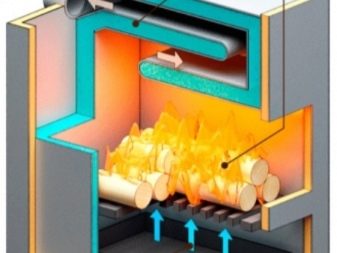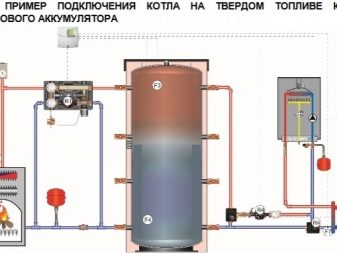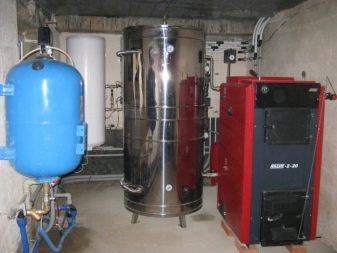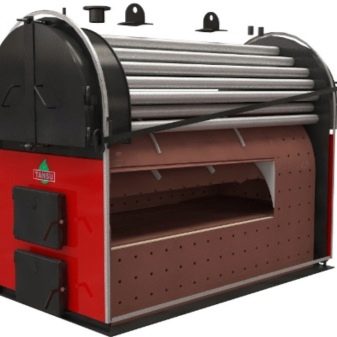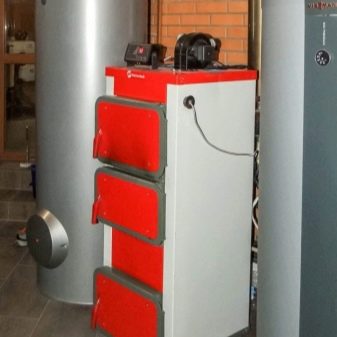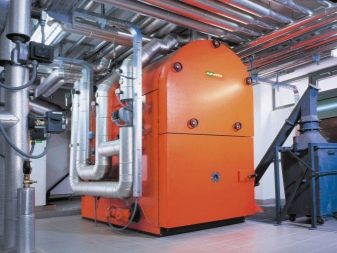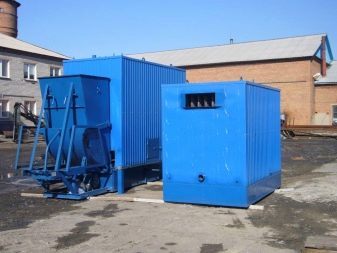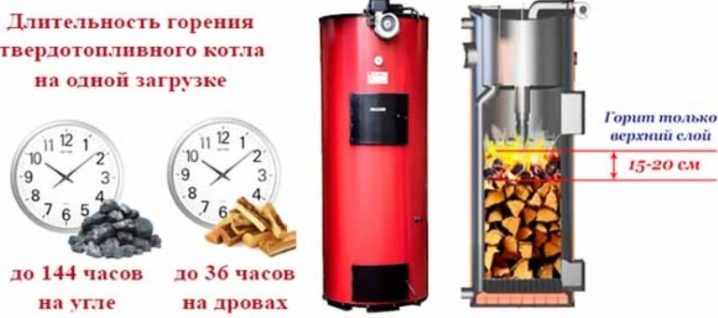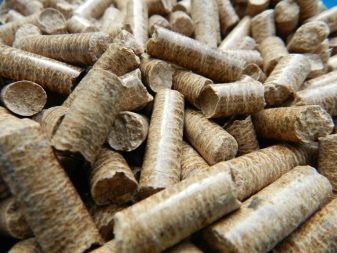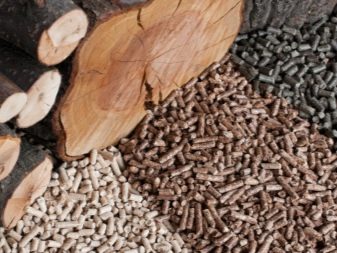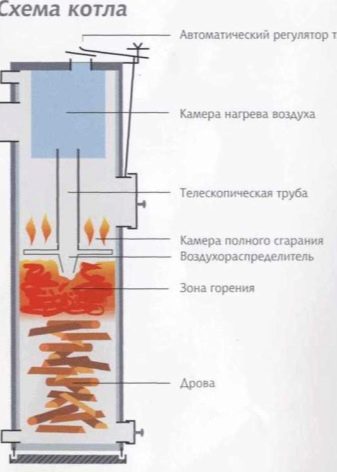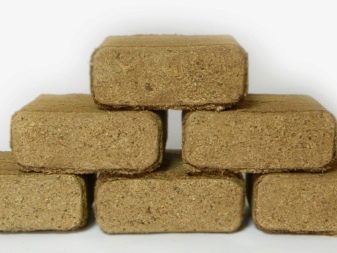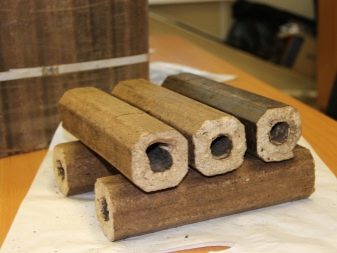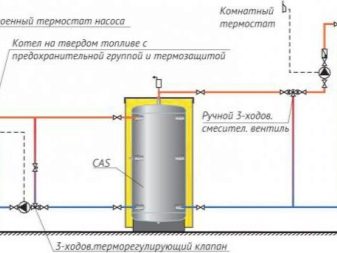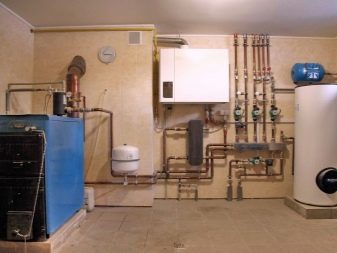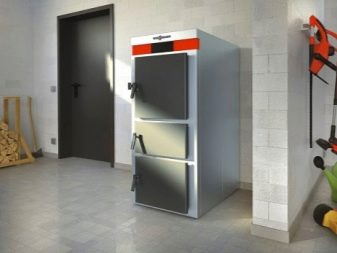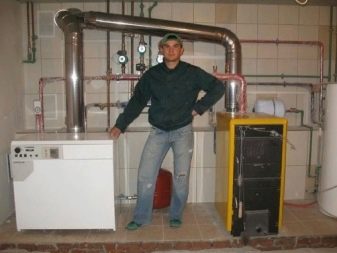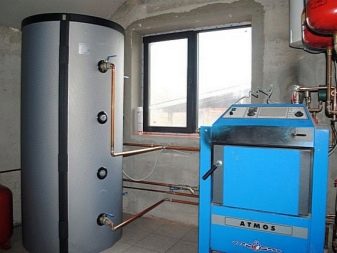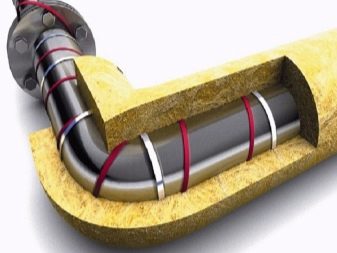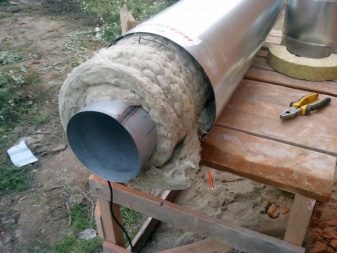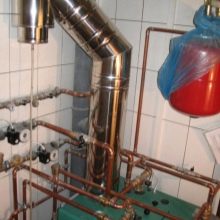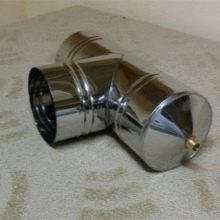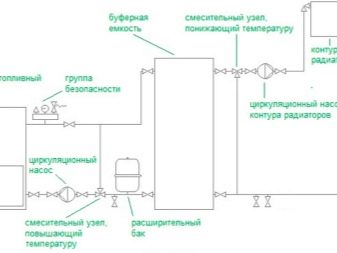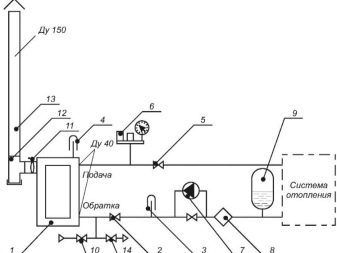Boilers for heating a private house on solid fuels: design features, manufacturers review and installation tips
For centuries and even millennia, solid fuels have been actively used to heat furnaces. The emergence of other types of fuel has displaced to a large extent such systems. But still, albeit in a new guise, they continue to be actively used in the 21st century.
Principle of operation
Solid fuel boiler burns:
coal;
firewood;
pellets;
peat;
wood chips and certain types of waste.
There are systems where used as a separate specified types of fuel, and their fancy combination. In contrast to gas, liquid and electric heaters, solid fuel boilers are regulated by automatic only limited. Alas, with all the development of modern technology, it is incapable of taking on the process of the initial loading of the same logs, coal or pellets.So, only the cycle from one filling to another can be automated. The rest of the work is done in a typical pattern.
Adjustment of the passage of water and its heating is provided by a three-way and thermo-mixing valve. Raising and lowering the flap allows determining the burning characteristics, its intensity and speed. Indirectly, this can be considered protection from overheating through the control of traction in the smoke exhauster. Any boiler that burns solid fuels can create very strong flashes when the temperature rises rapidly in a short time. This should be fully taken into account by the designers.
Advantages and disadvantages
Solid fuel boilers have a number of positive reviews, the authors of which note:
relatively low price, when compared with comparable in power electric and gas appliances;
lack of need for both electricity and gas (with the exception of combined and automated devices);
duration of use;
wide variety of fuel types and the possibility of its selection;
ability after a single refueling to work up to 72 hours in a row.
But such devices have numerous weaknesses. So, the combustion of coal, wood or pellets occurs with a very low efficiency (no more than 70%). It is impossible to get rid of the expenditure of forces on the preparation of fuel, on cleaning the boilers. Installation of such a boiler is complicated, and when it works, it is necessary to constantly monitor its operation. Requirements for the quality of fuel is extremely high. Adjust the temperature is fundamentally impossible.
Species
Manufactured at industrial enterprises boiler facilities are made of steel or cast iron. Self-made systems are singled out as a separate group where some other metals can be used. An important role is played by the gradation of the type of fuel used. Many people prefer pellet structures that consume specialized fuel pellets or mixed aggregates.
The type of combustion process allows to divide solid fuel boilers into:
long burning systems;
using gravity traction;
working with auxiliary;
pyrolysis installations.
Cast iron boiler is characterized by high thermal inertia, which can be both a plus and a minus, depending on the circumstances.At the same time, an increased corrosion resistance can be safely recorded in the asset to cast iron products. Contrary to the common stereotype, steel is no more expensive. The use of modern methods of metal welding significantly reduced the cost of such installations and made them a product of mass production. But there is another nuance: the steel boiler is inevitably monolithic, while its cast-iron “brother” is assembled from sections.
So, in case of any failure, if necessary, to make a major overhaul or just when moving it turns out to be more practical. If we compare in terms of service life, again the undisputed leadership belongs to cast iron. Even now, cast iron boilers produced before the 1980s have been successfully operated in some places, regularly producing heat into pipes and radiators three times younger than themselves. With regard to corrosion resistance, it is also not all simple. It is much more difficult to start in the apparatus of cast iron than in the steel system.
But if the process has already arisen (due to the inevitable occurrence of condensate in violation of the mode of operation), it will develop at an accelerated rate. Contrary to the obvious, a cast iron boiler that consumes wood or coal is lighter than its steel counterpart.The reason - the very modular structure. However, it can not be saturated immediately with cold water, it can lead to the destruction of the body or even an explosion. Theoretically, carefully thought-out strapping can prevent such a development of events, but it turns out to be extremely expensive and therefore rarely used.
Whatever the material of a solid fuel boiler, heat is transferred from it to the external environment. In addition to systems operating on the principles of convection, devices with a water circuit are now widely distributed. Such contours, we note, can be immediately two - if you want to get water not only in the heating system, but also in the water supply. The complexity of the device, its total cost and power generated with this choice immediately grow. What is important, fuel consumption increases as well, because water has to be heated more.
Solid propellant boilers have gained some acceptance. The firebox at them is located in front and differs in impressive dimensions. A convector in such a system is a conglomerate of pipes connecting shirts. Given the increased pressure, manufacturers equip steam boilers with pressure gauges, special valves that stop water leakage.Heating is performed quickly, but with a single-step scheme of action it is impossible to accurately calculate the fuel consumption efficiency, and the boiler will have to be placed on an extremely flat surface.
Automatic and semi-automatic solid fuel boilers compare favorably with manually-operated counterparts in that it is easier to work with them. A partially automated system is equipped with a fan, the torsion rate of which determines how quickly the fuel will burn. The minimum intensity of its burning allows you to stretch one portion for several days, but at the same time you can only prevent freezing of pipes and radiators, no more. The automatic option involves sending commands from the central unit to a special auger, which will take fuel from the bunker and pull it into the firebox.
The gas generator type is singled out in a special group due to the fact that it overcomes the shortcomings of the classical scheme: limited efficiency and tight limit on the duration of work. It has long been known that when heated, gas begins to be emitted from solid organic bodies. This effect was actively used even in cars of the first half of the last century.The wood boiler generates gas in the same way, reducing the supply of oxygen and transferring carbon dioxide into the afterburning chamber. In fact, burning in the chemical sense of the word occurs only in the first phase, and then the wood only smolders.
The advantages of the gas generator device are:
accelerated heating due to thorough heat protection of the working chamber;
optimal thrust adjustment;
quite long use of fuel.
The difference in heat generation time is noticeable well only in the most advanced (and expensive) models. It will not be possible to burn firewood, the humidity of which exceeds 20%. Instead of producing gas, they will be dried. The exceptions are models with the so-called vertical display of firewood and lower burning. There is allowed the use of even more wet wood.
Separate conversation deserve solid fuel boilers with a hob. In addition to direct heating of food, exhibited from above, some models can also heat it in the oven. Since heat is supplied from an open fire, the surface of the plate is equipped with a cast-iron panel.Such devices are recommended to be used in country houses and in country houses, where they (due to their multifunctionality) save space. You should carefully weigh the advantages of products with cast iron and steel heat exchanger - these options have both advantages and disadvantages.
Specifications
The technical parameters of a solid fuel boiler for the heating system of a private house are extremely important. These devices categorically do not correspond to the traditional view, which paints an image of an extremely primitive mechanism. In most cases, due to simplicity, a scheme with natural combustion is used. The most advanced devices have programmers that allow you to set the necessary heating programs. This automation controls the turbine or fan blowing air. Many practical properties depend on the specific mechanism for obtaining thermal energy.
For example, working on solid fuels by the pyrolysis method of installation in the second stage of their work burns gas, the combustion temperature of which reaches 1200 degrees. This allows you to increase efficiency up to 90% or more, which looks quite solid even in comparison with gas and electric systems.The “payback” for such an efficient operation consists in very strict requirements to the properties of the fuel (wood with a maximum humidity of only 16% and so on). As for power, an approximate estimate of the required characteristics can be given, based on an approximate figure of 1 kW for every 10 square meters. m heated space. The chimney for the described category of boilers must have exactly the height that is indicated in the technical passport and other accompanying documentation.
It is directly dependent on compliance with these guidelines whether the residents of the house are reliably protected from carbon monoxide poisoning. It is categorically not recommended to put the pipes less than 4 m in height, they also make it impossible to get normal traction. Attention should be paid to the selection of the thermostat. It is recommended to adjust this unit to maintain a temperature of 20 degrees (as the most comfortable value). The role of regulation, however, is not only in this - it is crucial for the prevention of corrosion. In children's rooms, it is advisable to set a stronger warming than the average (up to 22 degrees), and in a house where there is suffering from hypertension, it is possible to limit to 18 or 19 degrees.
The coal burner also deserves a separate discussion. The best models of such devices are made of cast refractory cast iron, which serve for a very long time. It is important to specify in advance what fraction of coal can be put into the boiler when using a specific burner. Only compliance with these standards allows you to avoid interruptions and disruptions in work. Experienced experts recommend finding out the model of the drive that supplies solid fuel, the model of the gearmotor installed in it, and check the reputation of the manufacturer.
Popular models
In a country so rich in coal and forest land, like Russia, solid fuel boilers are available in a wide range. Disassemble all existing options will not work, but it is still worth highlighting the modification "Zota Topol-M". The allusion to the well-known missile system in the name is not accidental - this boiler is also a “formidable and crushing weapon”, only in the fight against the cold. This name unites a whole series of boiler equipment produced in Krasnoyarsk. The developers promise ease of cleaning from soot, the duration of burning sessions and the absence of the need for electrical power.
Consumers point out that "Topol M" it is extremely simple, and you can understand its use without even getting acquainted with the instructions in detail. Entering firewood occurs through the upper door. The designers took care of the presence of a thermometer to monitor the operation of the device. It should be noted that until the heat exchanger is heated to 60 degrees, it may be covered with condensate. Depending on their needs, customers can choose devices with a capacity of 14-60 kW; it is allowed to equip with tenes (optional) to maintain a stable temperature.
Speaking about the brand of solid fuel boilers, it is useful to pay attention to Proterm Beaver 20 DLO. The Slovak unit, as claimed by its manufacturer, allows to heat houses with a total area of up to 200 square meters. The model is compatible with both gravitational and artificial circulation of coolant. The high-quality sectional heat exchanger of their cast iron and carefully selected other parts allow us to guarantee intensive use for 10-15 years. It is possible, using an additionally mounted boiler, to provide also hot water supply.
20 DLO able to work both on coal and on firewood.The most effective is the burning of wood with a maximum moisture content of 20% and coal with a grain size of up to 4 cm. The thrust adjustment is performed using the flap. Power in standard conditions - 19 kW. For your information: with different air supply modes it may change; the water in the heating circuit warms up to 90 degrees.
It is worth noting that it will take a long time to adjust to the specifics of thrust adjustment. In addition, 20 DLO is not very convenient in terms of cleaning the combustion chamber. Calling the boiler mobile is difficult, there are a number of modifications that move much better. Many people reasonably prefer boilers made in Belarus, such as KOS-TV. Fuel is loaded into it vertically; both coal and firewood can be used.
Thanks to a large entrance chamber with a piece of ceramic, you can lay a damp tree in pieces up to 0.4 m in length. The manufacturer claims that the size of the furnace and the surface of the heat exchanger is sufficient to ensure efficiency of 84% while reducing fuel consumption. The working chamber has a wall of 0.6 cm thick, depending on the modification the level of heat output is 23 or 45 kW.Water warms up to 95 degrees. The KST device supplied by the same manufacturer perfectly manifests itself in contact with a continuously operating heating system using a natural circulation mode and an open expansion tank. Anthracite of the AO category is used as the calculated fuel (to which all the thermal parameters specified in the documentation are attached). It is acceptable to burn stone and brown coal, as well as firewood that meets common household standards. The developers took care of the maximum delay of the flame in the boiler and the highest return from each gram of fuel.
Polish solid fuel boilers such as HT Classic by Heiztechnik. Installation of the upper burning is capable of processing any fuel, even coal fines and briquettes into heat. The system will be able to provide thermal energy to the premises from 30 to 280 square meters. m, as well as fill the boiler. The boiler runs smoothly for up to 15 hours. The afterburning function of exhaust gases provides an efficiency of 76%.
Performing all service manipulations from the front greatly simplifies the work of both the owners and the involved technicians.All specimens are tested to ensure maximum tightness. The Polish company uses only high-quality thermal insulation, drastically reducing losses and preventing the occurrence of burns. She is ready to give a guarantee on the stability of solid seams up to 6 years. The whole boiler as a whole has a guarantee of 15 years.
Criterias of choice
Choosing heating boilers for solid fuels is not as easy as it may seem. Naturally, the first item becomes the correspondence between the power of the equipment used and the heated area. Most manufacturers indicate that 1 kW of thermal resources is enough for 10-15 square meters. But it is completely unwise to apply these recommendations directly, because they do not take into account a number of important circumstances.
So, it is necessary to increase the power in comparison with the preliminary estimate by area if:
ceiling in at least one room above 3 m;
the heated parts of the house are in close contact with the unheated ones;
insulation and heat insulation do not meet the standards;
installed a lot of windows or held panoramic windows;
the house is built in an area with severe cold;
for a particular territory is characterized by strong and very strong winds, blowing often.
In all these cases, the power reserve (5 or even 10 kW) not only indicates the prudence of the owners, but also allows them to insure themselves from the slightest surprise. It is important to consider total performance or efficiency. In solid fuel boilers, it varies from 80 to 98%, so ignore this figure is not worth it. The difference between the extreme numbers means an extra 1.5-2 tons of wood or coal per season. But even the most energy efficient boiler can be bad if the cost of its operation is too high.
This cost is determined by:
used design solutions;
applied materials, their thickness and thermal conductivity;
quality of service, the extent to which it is available and what money it requires;
charge for replaceable parts;
conditions at operation;
expenses for different types of fuel.
The general rule is this: the higher the burning rate of fuel, the more expensive it will be to operate a solid fuel boiler. The devices of the classical scheme allow the use of all existing varieties of fuel (except perhaps for some exotic options), but they require loading a new batch 3-4 times per day.The latest models are equipped with a device that regulates the traction, which helps keep the heat in the furnace. Pyrolysis boilers allow you to load batches of fuel once every 24 hours, more details about their advantages and disadvantages have already been mentioned above. If the goal is to purchase equipment that will require the least participation of people, you should focus on pellet structures.
They are regulated very well, can sometimes use one load up to 7 days, and you can store fuel in virtually any environment. The wide spread of such systems is hindered only by the increased cost of their own and fuel used. If you cover the burner for pellets with sheet iron on top, it is allowed to use coal, firewood and even peat. Of great importance in any model has an external insulating sheath and its quality. It is recommended to take into account immediately the number of knees in the chimneys.
Direct channels do not allow to provide efficiency higher, than at a small fireplace for one room. But the complexity of the design of the chimney makes it more difficult and its installation, and also increases the risk of failure. So here you need to think thoroughly and look for balance.Reduce the number of required knees capable of creating a boost, in addition, it is great helps with a lack of traction. But you have to continuously monitor the seal around the door into the furnace, because even invisible to the eye damage to this material will immediately respond to the invasion of smoke into the room.
Independence from the electrical network is a double-edged sword. It is characteristic mainly for boilers operating on the principle of natural circulation. But their energy efficiency is insufficient for a modern comfortable home of a large area. But if the combustion chamber is equipped with a lining, this is a definite plus, - the amount of fuel burned per unit of power is approximately ¼ less than in similar devices without a lining.
Completely safe and absolutely stable operation of the boiler room in the house is achieved only by installing a water storage tank.
Similar buffer tank:
accumulates heat;
increases the total efficiency of the device;
help maintain a uniform temperature of the coolant;
will reduce heating costs.
The boiler for solid fuels is also required to choose the most carefully.Yes, these devices can last for several decades, and in terms of durability they are sometimes not inferior to simple heating counterparts. But it is all the more important to correctly evaluate their characteristics, to understand the features of the structures. The coolant in the system is heated to a temperature of from 95 to 110 degrees, while being under pressure up to 600 kPa. This pressure is applied not just like that, but for the prevention of boiling, which responds extremely negatively to the equipment.
Fuel bags help to reduce the heating of the emitted gaseous products of combustion to 200 degrees. Boilers of industrial production are formed by two main types of structures - the surface of the screen and convective unit. For their production, one-piece steel bar of a tubular form with a section of 7.6 cm is used. The whole structure is optimized to reduce heat losses. According to technical standards, the connection of parts is made strictly by welding (and nothing else) with the expectation of resistance to pressure of 10 atm.
In domestic conditions, low-capacity hot water boilers are used, this group according to the generally accepted classification includes devices that generate 4 to 65 kW of thermal energy.Wood options differ in smaller thermal force, but thanks to the increased fire chamber and the increased unit loading of fuel they provide intensive burning of fuel. The higher the power achieved, the more relevant the installation of the fan. It is required to put water boilers only in separate premises. Rooms or technical rooms where they are mounted, must be equipped with fire fighting equipment.
The boilers of long and slow burning, which are divided into several varieties, are very popular. The simplest devices of this kind, made according to the traditional scheme, are extremely reliable and last a long time. But to achieve high thermal efficiency from them will not work in principle. The choice of a long-burning boiler primarily depends on which type of fuel is most convenient to use. When the farm can constantly harvest wood, the choice is obvious.
For cottages located in the steppes, in the tundra zone or on the site of the reduced forest, it is advisable to heat the pellets. Only where a private house is located at a wood processing plant, is the use of sawdust justified.Weight should be taken into account only in the case when it is planned to mount the boiler on the wall. The limit is 100 kg. Fuel consumption per 1 kW of heat energy in steel boilers (for the same type of fuel, of course) is always 25-100% higher than in cast iron structures.
The undoubted advantage of long-burning boilers is that they can be used for the entire heating season. They are not fired again and again many times as simple furnaces, but only filled with additional portions of coal or firewood. The best options, according to most experts, are boilers using upper combustion. Air flow is injected into the highest layer of fuel, and as the laid down mass burns out, it moves lower and lower. Therefore, uniform use of coal, wood or pellets is ensured.
If at the first stage the temperature reaches 450 degrees, then in the pyrolysis phase, it already grows to 500-800 degrees. The design is externally similar to a candle, even the body is elongated vertically and close to the cylinder. The gap between the inner and outer walls serves to circulate water. Devices of long burning can consume either firewood and briquettes, or else coal.These two species should not be confused with each other; power calculation is made according to the standard method.
Installation rules
When the solid fuel boiler is selected, it is necessary to deal with the scheme of its installation. There are no regulatory documents that would concentrate requirements for the installation of boilers of this type. The necessary instructions are dispersed in a wide variety of legal acts. Obviously, the formation of dust and the risk of smoke penetrating outside when using solid fuels is unavoidable. Therefore it is worth refusing to install heating equipment in kitchens, in the corridors, in living rooms, and so on.
The best place, according to professionals, will be:
boiler room on the street;
technical room in the house itself;
garage;
underground floor.
Only in the most extreme case is it allowed to use a solid fuel boiler in a constantly aired part of the corridor, which is rarely visited. It is recommended in any of these options to put the device at the very outer wall. This helps to avoid laying long horizontal lines of chimneys or posting them through the ceiling.We must not forget that the heat exchanger will have to be cleaned, and therefore access to it must be provided without a single obstacle. It is forbidden to connect the flue ducts of wood boilers to the ventilation ducts made of bricks laid inside the walls.
In general, any idea of combining chimney and ventilation is extremely unfortunate in itself. If there is not enough space, you have to put the boiler so that it does not interfere with the passage. It is recommended to leave the gap between the maintenance-free sides of the equipment and the walls at least 0.1 m. There must be at least 0.25 m from the wall to the back wall of the boiler. Very heavy heating systems sometimes require pouring the foundation from concrete, this is the only way to guarantee their stability.
The cover of house structures made of highly flammable materials is achieved by sheet metal, asbestos cement, and minerite. Such protection is required for both floors and walls. It is possible and necessary to make a heat accumulator with your own hands, if it is not included in the standard package. The exhaust ventilation channel and the air inlet should be located at opposite ends of the room, and at different heights.The hood close to the boiler, on which the fan is mounted, is very silly to put.
You should not complicate your life by maintaining the strict symmetry of the axes of the chimney nozzles and the holes prepared in the walls. This task is successfully solved by turning the knee. To prevent the occurrence of condensation will help the use of pipes for the chimney with internal insulation. Alternatively, you can use a standard pipe and cover it outside with basalt material. The easiest external channel for the emission of smoke - a side format.
It is not recommended to make chimneys with more than three turns., and the smallest height (the starting point is the grate) is 5 m. The segments must be joined to the condensate drain on the inner wall and rain or melt water on the outer wall. The bottom of the chimney should be equipped with an inspection hatch and storage tank of condensing water. Roof eaves bypass, putting the pipe with a pair of knees at an acute angle. Ogolovki should not be in the area of wind backwater.
Installing heating boilers for solid fuels will be best if you make a drawing. Increased attention should be paid to the organization of the chimney and the stability of the heatingsystem. If homemade designs are used, simple wiring is preferred. However, even with the use of products of industrial production, it will be best. The clearer and clearer the contours of the water supply, the more efficient the system will be.
A detailed description of the principle of operation of the solid fuel boiler is in the video below.


